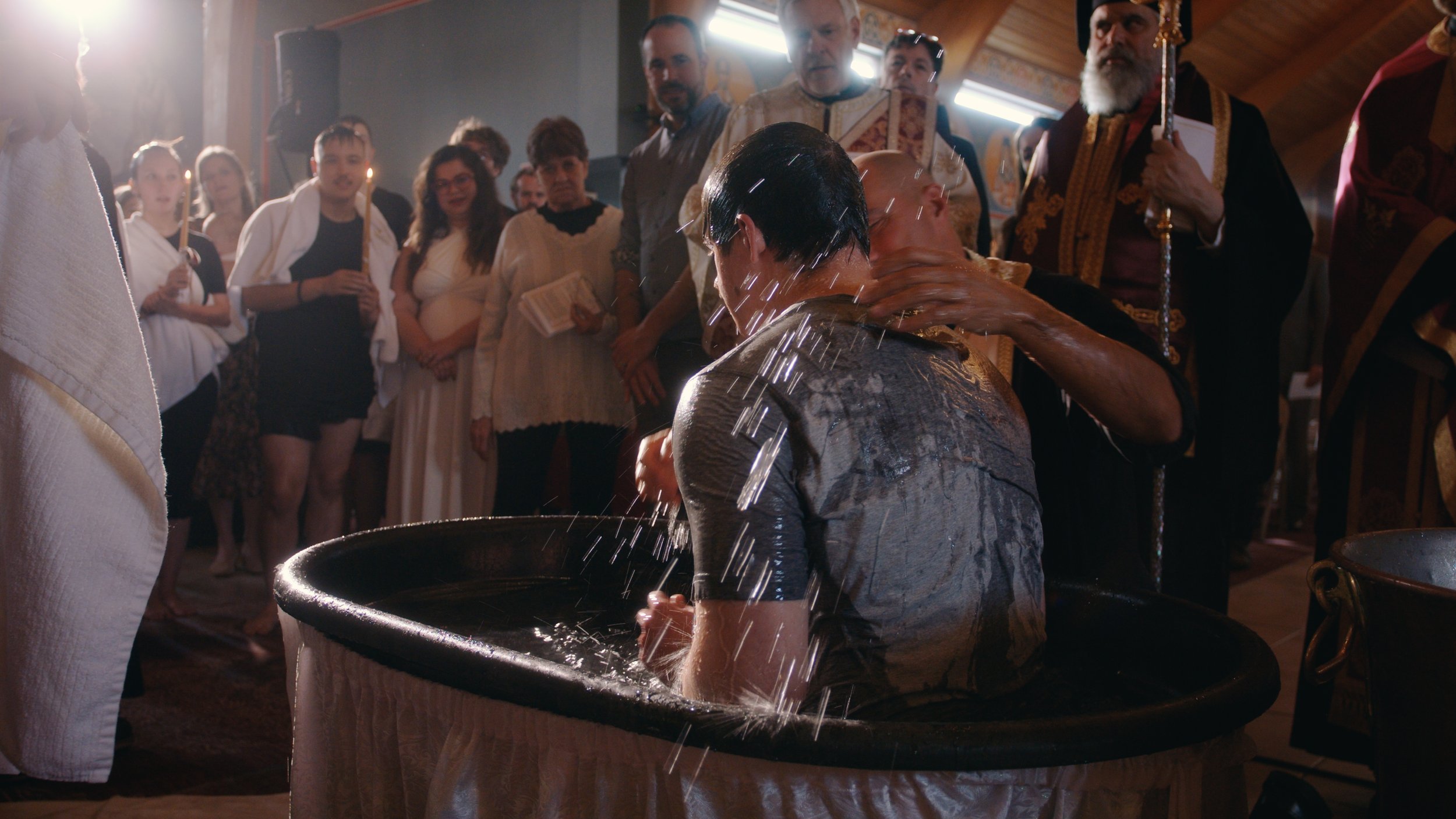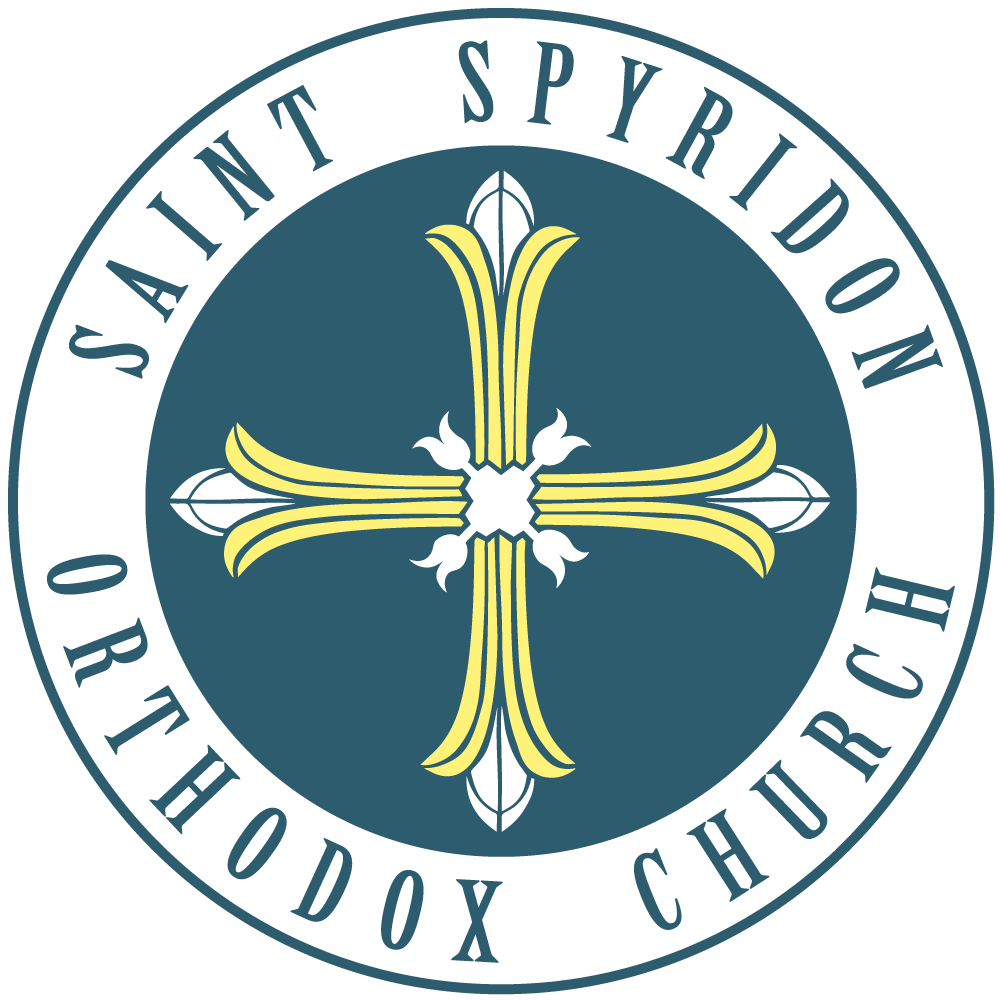
what to expect on your first visit
New to orthodoxy?
If you have never visited an orthodox church, you are not alone. Most of those now attending St. Spyridon were not raised in the Orthodox Church, but entered into the Faith later in life. To learn more about what you will encounter on your first visit, read more below:
-
“Since we are surrounded by so great a cloud of witnesses, let us also lay aside every earthly care and… run with perseverance the race that is set before us, looking to Jesus, the author and finisher of our faith…” Hebrews 12: 1
Icons are venerated by burning lamps and candles in front of them, by the use of incense and by kissing. But there is a clear doctrinal distinction between the veneration paid to icons and the worship due to God. The former is not only relative, it is in fact paid to the person represented by the icon. This distinction safeguards the veneration of icons from any charge of idolatry.
Visitors are welcome, but never expected, to venerate icons. Feel free to look at the beautiful icons that surround our church.
-
“Let my prayer be set forth before thee as incense; And the lifting up of my hands as the evening sacrifice.” -Psalm 141:2
In Orthodox Christianity, the use of incense stands out as a deeply symbolic practice. It’s more than just a fragrant offering; it’s a vital part of worship that engages the senses and draws the faithful into a deeper spiritual experience.
Through incense, worship extends beyond the visible; it taps into our olfactory senses which are closely linked to memory and emotion. This is crucial because it helps to reinforce the spiritual teachings within us long after the service has ended.
-
“If any man would come after me, let him deny himself and take up his cross and follow me” -Mark 8:34
The cross is the central symbol of Christianity, not only as the instrument of the world’s salvation by the crucified Christ, but also as the constant witness to the fact—that men cannot be Christians unless they live with the cross as the very center of their lives in this world.
For these reasons Christians place upon themselves the sign of the cross. The Orthodox place their first two fingers and thumb together to form a sign of the Triune God and cross themselves from the head to the breast and from shoulder to shoulder, right to left. This unique and all-embracing symbol shows that the cross is the inspiration, power and indeed the very content of our lives as Christians; and that man’s mind, heart and strength must be given to the love of God and man.
-
“I am the light of the world; he who follows me will not walk in darkness, but will have the light of life.” John 8:12
Upon entering an Orthodox church it is customary, but never expected, to light candles and offer prayers for one’s personal needs or that of a family member or friend. Candles are lit before icons as a sign of one’s faith and hope in God’s help that is always sent to all who turn to Him and His Saints with faith and prayers. By lighting a candle and offering a prayer, one enters into closer contact with the Church and her ministry to the faithful, invisibly warming the soul by the visible light of the candle.
-
“He who eats my flesh and drinks my blood abides in me and I in him (John 6: 56).
It is not accidental that Christ, when referring to His life, spoke of it as flesh and blood and identified His life at the Last Supper with the distinctive human food, bread and wine.
At the Divine Liturgy, the Holy Spirit comes upon the holy Gifts – the bread and wine of the Eucharist – to change them into the Body and Blood of Christ. God accepts the bread and wine of our offering. In return He gives us His own Son, who acts to make us His own Body. Jesus nourishes all who are in a state of readiness and watchfulness with His own glorified flesh and makes them partakers of divine life. Christ, the Bread of Life, changes and transforms us who feed on Him in faith and assimilates us unto Himself, as He promised.
-
"So you shall speak to all gifted artisans, whom I have filled with the spirit of wisdom that they make make Aaron's garments, to consecrate him, that he may minister to Me as priest." -Exodus 28:3
The Clergy's Vestments are an ancient tradition dating back to the Old Testament.
Today, our Clergy wear special vestments as a sign of their Priestly role, each piece representing a different aspect of the role or spiritual life of a Deacon, Presbyter or Bishop. A different prayer is said as each piece is donned. Vestments are more than beautiful decorations, but representations of God's promise and salvation. Each piece is a symbol of the particular role that each clergy member plays in the life of the Church.
For a more detailed description of what each piece of attire represents, click HERE.
FAQs
Can I visit if I am not orthodox?
The doors of our Parish are open to all visitors; no one is turned away. Most current parishioners have joined the Faith after having come from a non-Orthodox background. Our ushering team is always waiting to welcome newcomers, and we would love to have you visit.
Can I bring my children?
Children are not only allowed but welcome in the Orthodox Church, please feel free to bring them when you first visit. It is a part of our Faith that families worship together, and there is not separate children’s service. There is a quiet nursery upstairs for nursing mothers.
How will i know what to do?
As a first time visitor, there are no expectations that you will participate in our Orthodox customs and practices. If you feel the need to sit, please do. If you don’t know how or when to cross yourself, that’s okay too! You can choose to participate in as much or as little as you are comfortable with.
What should I wear?
We welcome you to wear whatever you are most comfortable in when you visit, while still recognizing that the Church is a sacred place. You will notice most parishioners in dressy-casual attire: skirts, slacks, blazers, etc.
How long are your services?
Sunday morning Liturgy is approximately an hour and a half. Occasionally, a short memorial or other special service may be held at the conclusion of Liturgy. Other services, Akathists, Vespers, and Orthros, are all closer to one hour.
Can I receive communion?
The sacrament of Holy Communion is reserved for prepared Orthodox Christians. Visitors are welcome to come forward during Communion time to receive a blessing from Fr. Evan, and receive a piece of the blessed bread.
Once you have worshipped with us, you may have still more questions. If you are interested in learning more about Orthodoxy and our community, please click below to be connected with a Catechist who can answer more questions and help guide you through your discovery of the Orthodox Faith.
What’s next?
How can i get involved?
Whether you’re looking for ways to meet people in the community, integrate yourself or your family, or simply be more active in the life of the Church, there is something for you. View our full calendar or click below to visit our Adult Education page with archives of previous classes and links to current opportunities to learn more about the Faith.


